When it comes to sofas/couches, the upholstery fabric is more than just a cover—it’s the face, feel, and lifespan of the furniture. The right fabric not only sets the tone for the room but also plays a key role in how long your sofa will last and how comfortable it will be. Different fabrics bring different vibes—whether you’re going for casual comfort or elegant sophistication, your choice of fabric will make a big impact.
In this article, I’ll walk you through some common upholstery fabrics, breaking down their durability, maintenance needs, and how they fit into various interior styles. By the end, you’ll have a clear idea of which fabric suits your specific needs and preferences, especially if you’re looking for something that balances style, comfort, and practicality.
I. Common Upholstery Fabrics for Sofas / Couches
1. Natural Fabrics
(1) Cotton
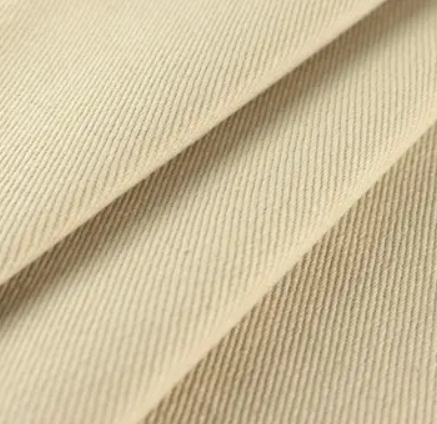
- Description: Cotton is a natural fiber that’s incredibly versatile, offering different textures depending on the weave. Plain weave is sturdy and great for everyday use, twill weave has a diagonal pattern that resists wear better, and sateen weave gives a smooth, shiny finish but may be less durable.
- Common Uses: Cotton fits well in both casual and formal settings, thanks to its adaptability. It can be dyed and printed in a wide range of colors and patterns, making it easy to match with various design styles.
- Pros:
- Breathability and comfort: Cotton is breathable, making it comfortable for sofas in warmer climates or sunny rooms. It’s soft and inviting, perfect for lounging.
- Versatility: Cotton’s ability to take on different dyes and prints makes it highly versatile, whether you want a neutral base or a bold statement piece.
- Cons:
- Maintenance and Longevity: Untreated cotton can stain, wrinkle, and fade, especially in high-traffic areas. It may also absorb odors more than synthetic fabrics.
- Solutions: Look for cotton treated with stain-resistant finishes or blended with a small percentage of synthetic fibers to enhance its durability and appearance over time.
(2) Linen
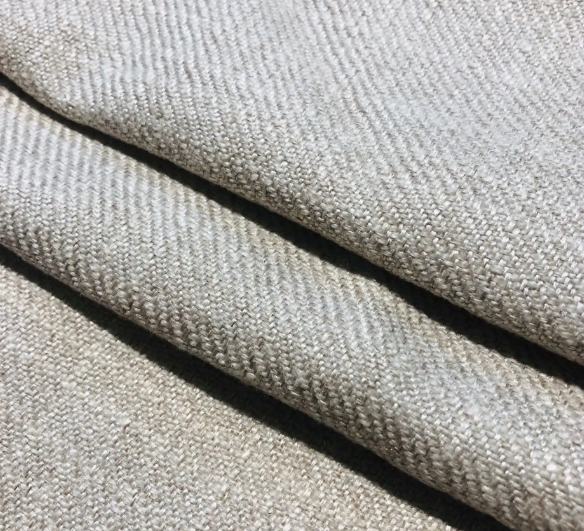
- Description: Linen is made from flax fibers and has a distinctive texture that softens with use. It’s excellent at wicking moisture, making it ideal for humid climates. This ability to stay cool and dry is why linen is so comfortable in warm weather, making it a popular choice for both high-end and relaxed, beach-style interiors.
- Common Uses: Linen is often used in high-end or casual designs, especially in coastal or minimalist settings. Its lightweight, airy quality fits perfectly with a natural, effortless elegance.
- Pros:
- Natural cooling properties: Linen is breathable, allowing air to flow freely and keeping surfaces cool, even in hot weather. This makes it perfect for sofas in sunlit rooms or warmer areas.
- Eco-friendliness: Linen is one of the most sustainable fabrics. The flax plant requires minimal water and pesticides, and nearly every part of the plant is used, resulting in very little waste. Plus, linen is biodegradable.
- Cons:
- Wrinkling: Linen wrinkles easily, which can add to its charm with a casual, lived-in look, or be a drawback if you prefer a more polished appearance.
- Maintenance: Keeping linen looking fresh might require some effort. You may need to steam or professionally clean it to maintain its best appearance, and protecting it from excessive sunlight is essential to prevent fading.
(3) Wool
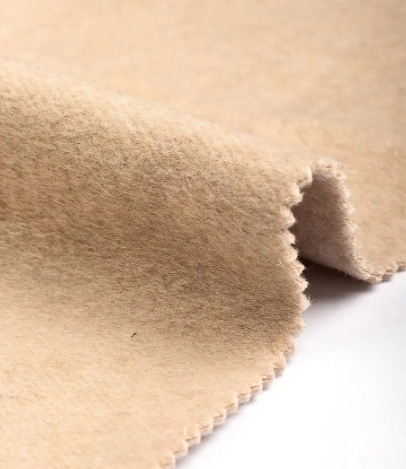
- Description: Wool is a natural fiber known for its warmth, durability, and resilience. There are different types of wool, like cashmere, merino, and alpaca, each offering various levels of softness and durability. Wool’s natural crimp and elasticity make it a great choice for upholstery, as it holds its shape well and resists crushing.
- Common Uses: Wool is typically used in cozy, rustic, or luxury settings. It’s a popular choice for sofas in homes that emphasize warmth and comfort, like those with a cabin or farmhouse aesthetic. Wool blends are also common in modern or high-traffic areas where extra durability is needed.
- Pros:
- Durability: Wool is naturally tough and resists wear, making it a great choice for upholstery. It’s often blended with other fibers to increase strength and lifespan. Wool’s elasticity helps it bounce back after compression, keeping the fabric looking and feeling good over time.
- Natural flame resistance: Wool’s natural flame-retardant properties make it a safer choice for home furnishings, especially in homes with fireplaces or wood-burning stoves.
- Cons:
- Maintenance challenges: Wool can be tricky to maintain, as it’s prone to felting and shrinking if not cleaned correctly. It usually requires dry cleaning or professional care. Wool can also attract moths, so proper storage and cleaning are crucial.
- Itchiness: Some types of wool, especially lower-quality ones, can be itchy or uncomfortable. To improve comfort, wool is often blended with softer fibers like silk or cashmere, which reduces the scratchiness while maintaining durability and warmth.
2. Synthetic Fabrics
(1) Polyester Blends
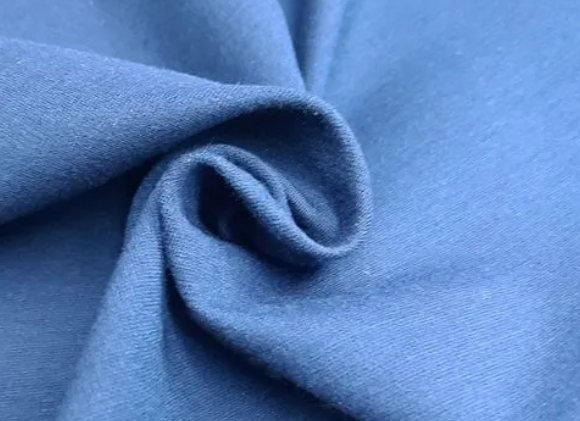
- Description: Polyester has come a long way since its early days. It’s now often blended with natural fibers like cotton or wool to improve its feel, look, and durability. These blends can give you the appearance and texture of more expensive fabrics while offering better resistance to wear, stains, and fading.
- Common Uses: You’ll find polyester blends in many family-friendly or budget-conscious homes. They’re particularly popular in households with kids or pets, where durability and easy maintenance are key. Polyester blends also work well for outdoor furniture, standing up to the elements without breaking a sweat.
- Pros:
- Versatility: Polyester is a bit of a chameleon. It’s used to create other fabrics, like microfiber, and when blended with natural fibers, it adds durability and resistance to wrinkles and fading. This makes polyester blends a flexible option for all kinds of upholstery.
- High resistance to wear and tear: Being synthetic, polyester is tough. It can handle heavy use, making it perfect for high-traffic areas. Plus, it’s resistant to stretching, shrinking, and mildew, which means your furniture stays looking good for longer.
- Cons:
- Environmental impact: Polyester isn’t biodegradable, and making it uses a lot of energy and chemicals. However, there’s progress in recycling polyester into new fabrics, which helps reduce its environmental footprint. If you’re concerned about sustainability, look for blends with recycled polyester or consider natural fibers.
(2) Microfiber
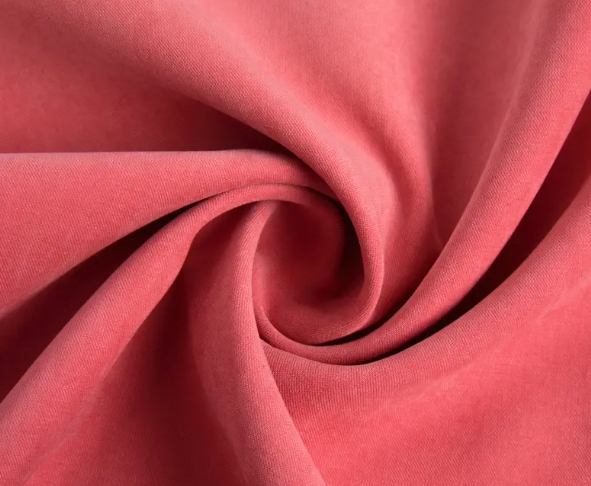
- Explanation: Microfiber is a synthetic fabric made from super-fine polyester or nylon fibers. It’s known for its soft, suede-like texture, which is created by splitting the fibers into even finer strands. This tight weave gives microfiber its special qualities, like being resistant to stains and spills, making it a top choice for homes with kids or pets.
- Pros:
- Stain resistance: Microfiber’s tight weave means liquids have a hard time penetrating, making it highly stain-resistant. This makes it great for high-traffic areas where spills are common. Plus, it resists dirt and dust, which makes it low maintenance.
- Maintenance ease: Cleaning microfiber is a breeze—just soap and water usually do the trick. It also dries quickly, adding to its convenience as an upholstery material.
- Cons:
- Attraction to pet hair and dust: While microfiber does well with stains, it can attract pet hair, dust, and lint because of its static nature. Regular vacuuming or using anti-static sprays can help keep the fabric clean and looking its best.
(3) Acrylic
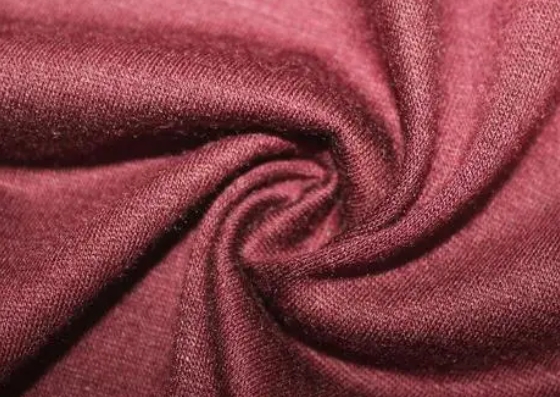
- Description: Acrylic is a synthetic fabric that’s often chosen as a more budget-friendly alternative to wool. It mimics the soft, warm feel of wool but comes with added perks like being fade-resistant and lighter in weight. This makes acrylic a go-to for outdoor or sun-exposed furniture since it holds up well against the elements without losing its color or texture.
- Common Uses: Acrylic shines in outdoor or sunny spots because it doesn’t fade easily and is light enough to move around as needed. It’s also a solid choice indoors when you want that wool-like look without the high cost or maintenance that wool usually demands.
- Pros:
- Fade resistance: Acrylic doesn’t fade easily, which is a big plus for sofas in bright rooms or outdoor areas. Its colorfast nature means the fabric stays vibrant, even after long exposure to sunlight.
- Lightweight: Acrylic is much lighter than natural wool, making it easier to handle and install. This makes acrylic furniture more portable, a definite advantage for outdoor setups or flexible living spaces.
- Cons:
- Durability concerns: Lower-quality acrylic can be prone to pilling and might not last as long as you’d like. Choosing high-quality acrylic is key to ensuring your furniture stays in good shape over time. Pay attention to the fabric’s weight and density when making your selection to ensure durability.
(4) Chenille
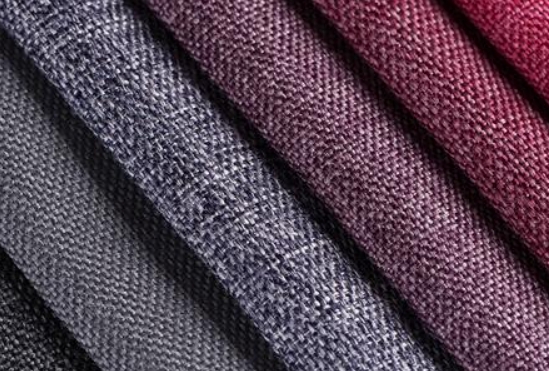
- Description: Chenille is a fabric made from yarns with a fuzzy surface, giving it a plush, velvety texture that’s hard to resist. Typically made from a blend of fibers like cotton, polyester, and acrylic, chenille combines softness with durability. Its rich texture adds warmth and depth to any room, making it a favorite for those who love a cozy, inviting atmosphere.
- Common Uses: Chenille is perfect for spaces where comfort is king. You’ll often find it on sofas, cushions, and throws in living rooms, family rooms, or any spot designed for relaxation. Its plush texture makes it ideal for creating a welcoming, cozy vibe.
- Pros:
- Rich texture: Chenille’s thick, plush texture makes it a standout for adding warmth and visual interest to a room. It’s particularly great for making a space feel cozy and inviting.
- Durability: When blended with synthetic fibers, chenille holds up well under regular use, combining softness with strength. This makes it a versatile choice for various types of upholstery, balancing comfort with durability.
- Cons:
- Maintenance: Chenille needs a bit of extra care to keep it looking its best. Regular vacuuming is important to prevent dust and dirt from settling into the fabric. To avoid pilling, it’s wise to steer clear of harsh cleaning methods and consider professional cleaning for more thorough upkeep.
3. Luxurious Fabrics
(1) Velvet
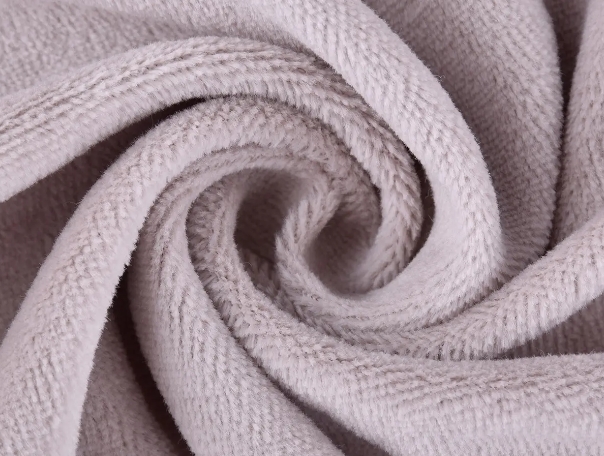
- Description: Velvet is known for its rich, plush feel and luxurious sheen. It’s available in various types, including:
- Silk Velvet: The pinnacle of luxury, with a smooth, soft texture and deep luster, but it’s also the most delicate and costly.
- Cotton Velvet: Less shiny than silk but more durable and easier to care for, making it suitable for everyday use.
- Synthetic Velvet: Made from polyester or a blend of synthetics, this type is durable, fade-resistant, and more affordable while still offering that signature soft feel.
- Common Uses: Velvet is typically used in elegant, high-end interiors, adding a sophisticated touch to sofas, armchairs, and decorative pillows. It’s particularly popular in formal living rooms and bedrooms where its luxurious appearance can truly shine.
- Pros:
- Luxurious appearance: Velvet’s rich texture and sheen make it a standout choice for adding elegance and depth to any room, instantly elevating the space.
- Soft texture: The dense pile of velvet creates a soft, inviting surface, making it ideal for comfort-focused furniture, especially in cozy or intimate settings.
- Cons:
- Maintenance: Velvet needs careful upkeep to maintain its luxurious look. Regular vacuuming is essential to keep dust and dirt from settling in, and spills should be blotted immediately. For deeper cleaning, professional help is often necessary.
- Prone to crushing: Velvet can crush easily, leading to marks and uneven textures. To minimize this, rotate furniture regularly, and consider steaming the fabric to restore its nap. Avoid placing heavy objects on velvet surfaces for too long.
(2) Silk
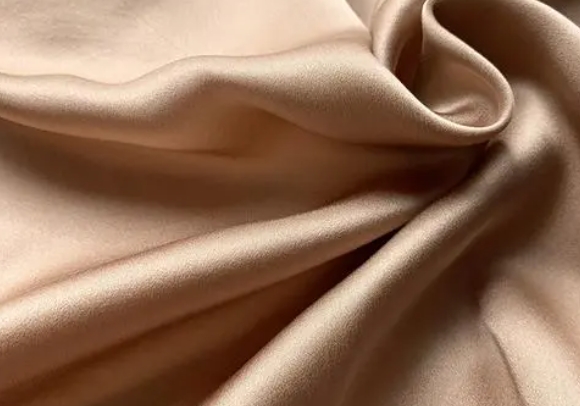
- Description: Silk is a natural fiber produced by silkworms, known for its luxurious feel, delicate sheen, and fine texture. Long associated with opulence, silk has been a staple in high-end textiles and upholstery for centuries. Its smooth, soft touch and natural luster give it an elegant, sophisticated appearance, though it’s also one of the most delicate fabrics, requiring careful handling.
- Common Uses: Silk is best suited for decorative pieces or low-use areas, like formal living rooms or guest bedrooms, where its delicate nature is less likely to be compromised. It shines in throw pillows, accent chairs, or draperies, where its beauty can be appreciated without heavy wear.
- Pros:
- Elegance: Silk’s natural sheen and fine texture make it one of the most luxurious fabrics available, instantly elevating any room with a touch of refinement.
- Temperature regulation: Silk naturally regulates temperature, staying cool in summer and warm in winter, making it a comfortable and stylish choice for upholstery in various climates.
- Cons:
- High maintenance: Silk is delicate and requires professional cleaning. It’s prone to staining and fading, so it should be kept away from direct sunlight and handled with care to maintain its luster.
- Cost: Silk is one of the most expensive upholstery fabrics, which can be impractical for large furniture pieces or high-traffic areas. For a more budget-friendly option, consider synthetic alternatives like faux silk or silk blends that offer a similar look at a lower cost.
4. Leather
Leather
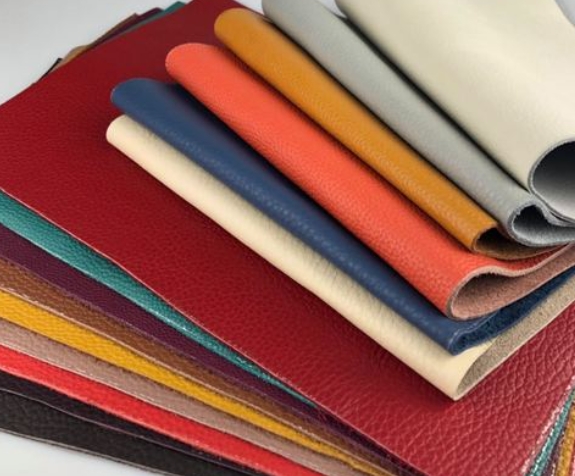
- Description: Leather is a tough, versatile material made from animal hides, usually cowhide. It comes in different types, each offering various levels of quality and durability:
- Full-Grain Leather: This is the highest quality leather, retaining the natural grain of the hide, which makes it strong and durable. Over time, it develops a rich patina that adds character and charm.
- Top-Grain Leather: Slightly less expensive, top-grain leather is sanded to remove imperfections. It’s more uniform in appearance and softer to the touch but doesn’t develop the same depth of character as full-grain.
- Bonded Leather: Made from leftover scraps bonded with adhesive, bonded leather is the most affordable but also the least durable, prone to wearing and peeling over time.
- Pros:
- Aging gracefully: Leather gets better with age, developing a unique patina that adds depth and personality to the furniture.
- Ease of cleaning: Leather is easier to clean than fabric. Spills can be wiped away with a damp cloth, and it’s naturally resistant to dust and allergens. Regular conditioning keeps it soft and prevents cracking.
- Cons:
- Sensitivity to climate: Leather can react to environmental conditions. In dry climates, it may crack without regular conditioning, and direct sunlight can cause fading. Humidity can also lead to mildew if not properly cared for.
- Maintenance: Keeping leather in top condition requires regular care. This includes dusting, conditioning every 6-12 months, and protecting it from harsh conditions to prevent drying and cracking while maintaining its softness.
5. Hybrid and Performance Fabrics
(1) Hybrid Fabrics
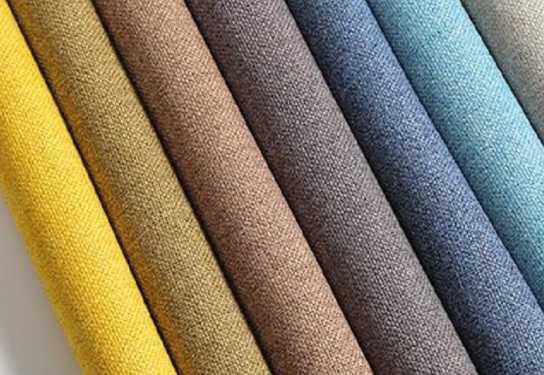
- Description: Hybrid fabrics are a smart mix of natural and synthetic fibers, designed to balance comfort, durability, and look. These blends give you the best of both worlds, combining the softness and breathability of natural materials with the strength and easy maintenance of synthetics. They offer better resistance to wear, manage moisture well, and come in a variety of textures and finishes.
- Examples:
- Cotton-Polyester Blends: These combine cotton’s comfort with polyester’s durability and wrinkle resistance, making them ideal for everyday furniture that needs to be both comfortable and tough.
- Linen-Viscose Mixes: Linen’s natural texture is paired with viscose, which adds softness and a slight sheen. This mix gives you a luxurious feel that’s also easier to care for than pure linen.
- Pros and Cons:
- Pros:
- Balanced Performance: Hybrid fabrics offer a nice mix of natural feel and synthetic durability, making them versatile and suitable for various interiors.
- Durability: The synthetic fibers in the blend boost the lifespan of the fabric, making it more resistant to fading, stretching, and wear.
- Cons:
- Special Care Instructions: While generally durable, some hybrids might need specific care to keep them looking good, like avoiding heat or harsh chemicals.
- Cost: Hybrid fabrics can be pricier than purely synthetic options, especially if high-quality natural fibers are involved, but the extra cost usually pays off in durability and comfort.
- Pros:
(2) Performance Fabrics

- Description: Performance fabrics are built to handle the tough stuff—durability, easy maintenance, and resistance to damage are their main features. They’re designed for homes with kids, pets, or heavy use, and they’re treated to resist stains, repel water, and withstand sunlight without fading.
- Examples:
- Crypton: Known for its stain resistance, moisture barrier, and antimicrobial properties, Crypton is great for homes where spills and accidents are common. It’s easy to clean and ideal for busy households.
- Sunbrella: Originally made for outdoor use, Sunbrella is fade-resistant, water-repellent, and highly durable. It’s perfect for furniture that gets a lot of sun or is exposed to the elements.
- Pros and Cons:
- Pros:
- Stain-Resistant: Performance fabrics like Crypton and Sunbrella resist stains, making them easy to clean and ideal for low-maintenance living. Spills wipe away easily, and the fabrics resist mold and mildew.
- Water-Repellent: These fabrics prevent liquids from soaking in, protecting your furniture from damage, especially useful in homes with kids or pets, and for outdoor furniture.
- Durability: Built to last, these fabrics handle wear, fading, and sun damage well, making them perfect for high-traffic areas or tough environments.
- Cons:
- Limited Aesthetic Range: While highly functional, performance fabrics might not offer the same softness, natural texture, or visual appeal as purely natural fabrics, which some might find less luxurious or comfortable.
- Cost: The technology behind performance fabrics often makes them more expensive than standard options, but the investment usually pays off with their long lifespan and low maintenance needs.
- Pros:
Here’s a summarized table of the 12 common used sofa / couch upholstery fabrics with key information:
| Fabric | Description | Pros | Cons | Best For |
|---|---|---|---|---|
| Cotton | Versatile natural fiber; various weaves available | Breathable, comfortable, versatile | Prone to staining, wrinkling, fading | Casual and formal settings |
| Linen | Natural fabric from flax, known for its texture | Cooling, eco-friendly, luxurious feel | Wrinkles easily, requires maintenance | High-end, beach-style interiors |
| Wool | Natural fiber, warm and durable | Durable, naturally flame-resistant | Requires careful maintenance, can be itchy | Cozy, rustic, luxury settings |
| Polyester Blends | Blend of natural and synthetic fibers | Durable, versatile, resistant to wear and tear | Environmental impact, may require special care | Family-friendly, high-traffic areas |
| Microfiber | Synthetic fabric, fine polyester or nylon fibers | Stain-resistant, easy to clean | Attracts pet hair and dust | Homes with kids or pets |
| Acrylic | Synthetic, wool-like feel | Fade-resistant, lightweight | Can pill, less durable in low-quality versions | Outdoor furniture, sun-exposed areas |
| Chenille | Plush, velvety texture, made from blended fibers | Rich texture, durable when blended with synthetics | Requires careful maintenance, can pill | Cozy, inviting living spaces |
| Velvet | Dense pile, luxurious sheen | Luxurious appearance, soft texture | Requires regular maintenance, prone to crushing | Elegant, high-end interiors |
| Silk | Luxurious natural fiber, delicate sheen | Elegant, temperature-regulating | High maintenance, expensive | Decorative pieces, low-use areas |
| Leather | Durable, natural hide material | Ages well, easy to clean | Sensitive to climate, requires regular conditioning | High-traffic areas, formal settings |
| Hybrid Fabrics | Mix of natural and synthetic fibers | Balanced performance, durable | May require special care, can be costly | Various interior styles |
| Performance Fabrics | Engineered for durability, stain and water resistance | Stain-resistant, water-repellent, highly durable | Limited aesthetic range, higher cost | High-traffic, outdoor settings |
II. Considerations When Choosing Upholstery Fabric
1. Usage Patterns
- High-Traffic Areas: In busy spaces like family rooms or living rooms where kids and pets are common, you need fabrics that can handle daily wear. Microfiber and leather are great choices here. Microfiber resists stains and is easy to clean, which is a lifesaver in homes with kids or pets. Leather is tough and wipes clean easily, but it does need regular conditioning to stay soft and crack-free. These materials are built to withstand heavy use, keeping your sofa looking good for years.
- Low-Traffic Areas: In rooms that don’t see much action, like formal living rooms or guest rooms, you can go for more delicate, luxurious fabrics like silk or velvet. These materials offer a sophisticated and elegant look, perfect for creating a refined atmosphere. However, because they’re more delicate, they’re best for spaces where spills, stains, or heavy wear aren’t much of a concern.
2. Aesthetic Preferences
- Matching Decor: Your fabric choice should match the room’s color scheme and style. For a modern, minimalist vibe, fabrics like linen or cotton-polyester blends in neutral tones work well. If your style is more traditional, velvet or wool in deep, rich colors can add a touch of luxury and warmth. Also, think about the fabric’s ability to hold color and resist fading, especially in rooms with lots of natural light.
- Texture and Feel: Texture plays a big role in setting the mood of a room. If you want a cozy, inviting space, go for soft, plush fabrics like chenille or velvet. These materials add warmth and comfort, making them perfect for lounging areas. For a more formal, structured look, consider smoother, firmer fabrics like leather or silk. The way the fabric feels under your hand and against your skin is also important, so choose something that fits the atmosphere you’re aiming to create.
3. Maintenance Needs
- Ease of Cleaning: Different fabrics require different levels of care. If you want something easy to maintain, look for materials like microfiber, performance fabrics like Crypton, or leather. These are designed to resist stains and can often be cleaned with just a damp cloth or mild detergent. This is especially important for families or pet owners. On the flip side, fabrics like silk or linen might need professional cleaning to keep them looking their best, which could add to the long-term maintenance cost.
- Longevity: How long your sofa looks good depends a lot on the fabric you choose. Durable fabrics like leather or wool blends are less likely to show wear over time, making them a solid investment for frequently used furniture. Think about how the fabric will age—leather, for example, develops a nice patina, while other fabrics might fade or pill if not properly cared for. Picking a fabric known for its durability can help your furniture stay in great shape for years.
4. Budget Considerations
- Cost vs. Value: When picking upholstery fabric, it’s important to weigh the upfront cost against the fabric’s durability and lifespan. High-end fabrics like silk or full-grain leather might be more expensive, but their longevity and classic appeal can make them a good investment over time. If budget is a concern, mid-range options like cotton-polyester blends or synthetic velvets offer good durability and style at a more affordable price. The goal is to find a fabric that fits both your aesthetic and practical needs without going over budget.
- Alternatives: If you love the look of an expensive fabric but need a more budget-friendly option, there are plenty of alternatives. Synthetic velvet can mimic the luxurious look of silk velvet without the high cost or maintenance. Similarly, bonded leather gives you the appearance of genuine leather at a fraction of the price, though it might not last as long. These alternatives let you achieve the style you want while staying within your budget, making them a smart choice for balancing cost and quality.
III. Conclusion
- Summary of Key Points: We’ve covered a variety of upholstery fabrics, each with its strengths and considerations. From the natural comfort of cotton and linen to the durability of leather and the luxury of velvet and silk, there are plenty of options. We also looked at hybrid and performance fabrics, which offer a good balance of durability and easy maintenance.
- Expert Recommendations: When choosing upholstery fabric, think about what’s important for your needs. For high-traffic areas, performance fabrics like Crypton or tough options like leather and microfiber work well. If you’re going for a more upscale, formal look, velvet or silk adds that touch of elegance. And if sustainability is a priority, linen or wool blends are solid choices.
- Final Thoughts: Picking the right upholstery fabric should match your practical needs, style preferences, and budget. Consider how the fabric will be used, how much maintenance it requires, and how it fits with the rest of the room. Whenever possible, it’s a good idea to see and feel the fabrics in person to make sure they meet your expectations.






